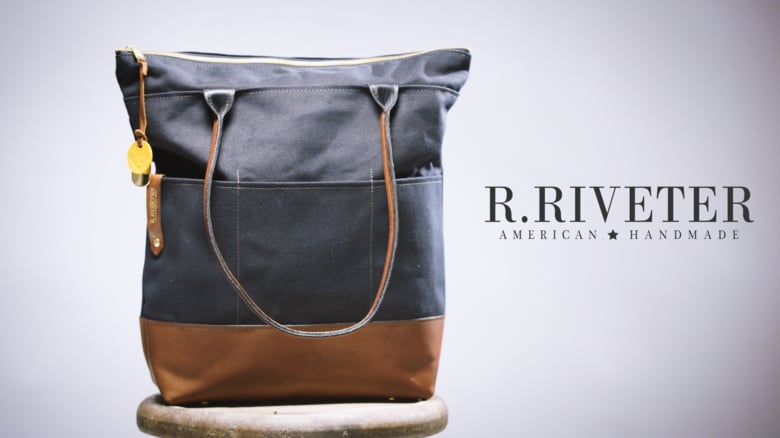Reshoring of U.S. Apparel Manufacturing: Lesson from an Innovative North Carolina based Manufacturing Company

Governments and Industries alike have desired reshoring of U.S. apparel manufacturing for several years now, but the labor-intensive manufacturing processes of apparel have made reshoring financially infeasible. While industry efforts focus on technological innovation to find a cost-efficient manufacturing process, the innovation of the business model has remained behind. This paper introduces a North Carolina based U.S. manufacturing company which is built upon an innovative supply chain network and business model to make their labor-intensive manufacturing process feasible inside the U.S and achieve a significant business success. This case explains how U.S. apparel manufacturing could potentially learn from this company to support U.S. apparel reshoring initiatives.
Riveter is a North Carolina based leather products manufacturer and distributor who manufactures canvas and leather handbags that are constructed by under-employed military spouses community (called “Remote Riveter”). Along with a strong social purpose of providing a portable income to military spouses, R. Riveter also reducing the environmental impact by repurposing the discarded military materials such as retired military uniforms, canvas tents, tent liners, and wool blankets.
While committed to this strong social and environmental mission, R. Riveter operates through a unique business and supply chain model. The company has a network of “Remote Riveters” located throughout the United States (from the east coast to Michigan to Idaho to California as Fig 1) who cut and sew components of the handbags from their homes and send them to R. Riveter’s headquarters in North Carolina, where they are assembled and made ready for sale. R. Riveter supplies the raw materials and the Remote Riveters supply their own sewing machines and equipment. One riveter might sew bag linings while another hand-dyes the leather labels. The riveters assemble their pieces and return them, via the U.S. Postal Service, to the warehouse for final assembly. While the company started in 2011 in the founder’s garage with $4,000 cash; today, R. Riveter is a $2.3 million company with 1,273% growth in last 3-years (Inc. 5000)
The innovation to bring U.S. apparel manufacturing back home is predominantly focused on technology and manufacturing system design. Walmart U.S. manufacturing innovation fund to reduce the cost of manufacturing in U.S., Under Armour Baltimore innovation center, Amazon recent U.S. patent for on-demand apparel manufacturing, the creation of Advanced Functional Fabrics of America (AFFOA) near MIT, rise of 3D manufacturing, sewbots, automation are the few example of innovation efforts for reshoring U.S. apparel manufacturing (Moser & Montalbano 2018).
While all these technological innovations have its own merit, R. Riveter draws demonstrates a very different extent of innovation. The company shows how the innovation in supply chain networking and business model can make U.S. manufacturing feasible and profitable. In other words, the founders showed why labor-intensive manufacturing in the U.S. need not wait for the technological breakthrough. Through establishing a $2.3 million company with more than 1,200% growth in last 3-years, they send a strong message that Made in America is strong & alive; the right entrepreneurship mindset and innovative business model can play a vital role in reviving the U.S. manufacturing.
The manufacturing operation of R. Riveter leather products is fragmented, multi-staged, includes different machines and human labor which is much similar to the apparel manufacturing. Hence apparel manufacturing in the U.S. could be inspired by their manufacturing and supply chain model. While large-scale manufacturing is challenging in R. Riveter model, this could be specifically useful for small and medium apparel manufacturing company. High end and seasonal fashion apparel could be the most suitable product range for such a company.
Riveter is selling their leather bags in the price range of $45-$320 which is higher than the comparable imported products, but consumer accepted the price point because of their reliability on quality and their pride of Made in America. Also, recent research shows, consumer are increasing interested in Made in America and interested to pay an additional 10% incentives (Moser & Montalbano 2018). As a result, even high-end fashion product has an increased price point; consumers are expected to accept that.
Today only 3% of the total U.S. apparel consumption are domestic sourced (Moser & Montalbano 2018); hence there is an enormous opportunity for the new apparel manufacturing in U.S. if innovative business and supply chain model is considered along with technological innovation.
- Categories:


